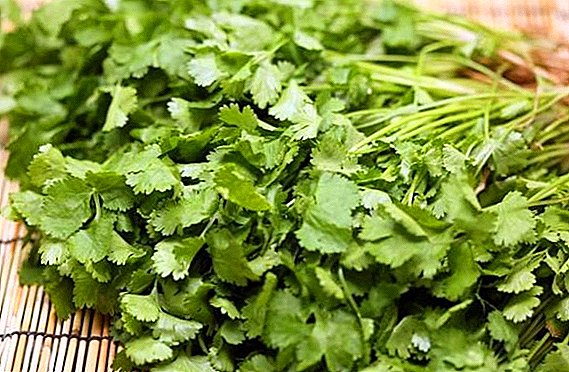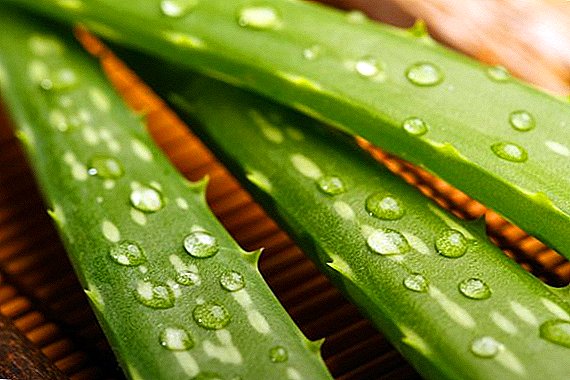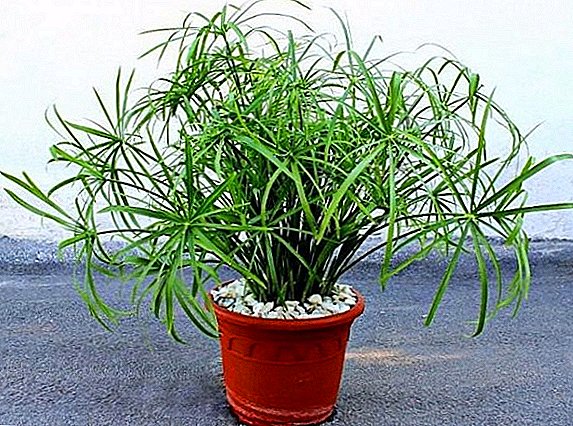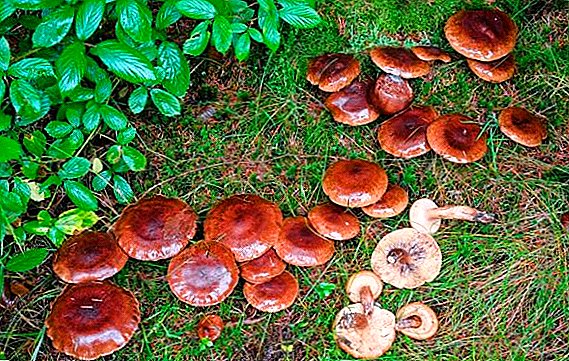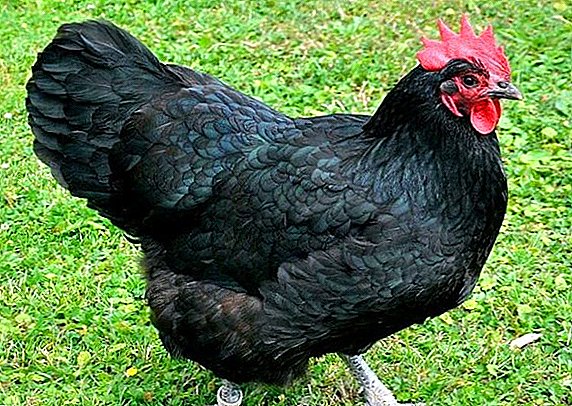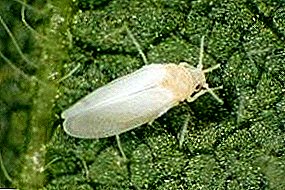
The whitefly is one of the most harmful and dangerous insects for the dacha. This small yellow butterfly with white wings is very similar to the usual home moth.
It reproduces well at high temperature and humidity. Lays eggs on the underside of leaves. Both larvae and adult insects feed on plant sap.
Methods of dealing with whitefly at the site and in the greenhouse
Most often, this pest affects indoor and greenhouse plants, but it can also feed on vegetable crops growing in open ground. Whitefly breeds very quickly, and 3-4 breeds of pests are derived in one season.
One butterfly can postpone about 120 eggsof which after a week larvae appear. In this state, they are the most dangerous, and can cause considerable damage to plants. After another 2 weeks, the larvae turn into nymphs and no preparations during this period will help to get rid of them. After which the nymphs pupate and become butterflies.
An adult insect secretes a sticky sugary substance, which is a fertile medium for the appearance of fungal and viral diseases on the plant. The appearance of the pest can be seen on the blurred yellow spots and white dots on the bottom of the leaves. Damaged leaves curl, dry out and fall off.
Fighting in the open field
 How to deal with the whitefly? At the site of this pest often affects cabbage, strawberries, strawberries and ornamental crops. Get rid of it is quite difficult. Can try collect insects by hand, use chemical or folk remedies.
How to deal with the whitefly? At the site of this pest often affects cabbage, strawberries, strawberries and ornamental crops. Get rid of it is quite difficult. Can try collect insects by hand, use chemical or folk remedies.
If the area of infection is small, the affected leaves are simply torn off and immediately burned. Experienced gardeners are advised to shoot down insects with the help of strong water from a hose. After this procedure, the soil around the plant is carefully loosen to a depth of 2-3 cm, to destroy water-washed insects.
There is another, rather unusual way to deal with whitefly in the garden. To do this, use the usual anti-scabies in humans: benzyl benzoate emulsion. It is diluted with water (30 ml per liter of water) and spray the affected plants. Processing should be carried out several times, with an interval of a week.
Also use special glue traps that hang directly on the leaves of the damaged plant. They can be made independently. It is enough to take the rosin melted in a water bath, mix with honey and petroleum jelly, and apply this substance to small pieces of thick cardboard or plywood.
As traps You can use simple sticky tape from flies and mosquitoes. By the way, such devices also help well in the greenhouse. If the above methods do not help, then you have to resort to chemical drugs.
How to deal with the whitefly in the greenhouse?
To protect the greenhouse from the penetration of pests, it is necessary to weed regularly, annually carefully dig and disinfect the soil, use only high-quality, proven planting material. If it’s not possible to avoid the whitefly, then it's time to move to action.
In addition to sticky baits, it helps to catch insects with a vacuum cleaner and freeze the greenhouse in winter. In industrial greenhouses often use biological methods of control. On 1 square. three pupae are placed The natural enemy of the whitefly butterfly is encrasion. This method is especially effective in growing tomatoes.
Reference! On cucumbers, this method does not work, because the hairs on their leaves do not give encrase closer to the butterfly larvae.
 Do well with the destruction of the whitefly on peppers and tomatoes macrolofus bugs (per square meter produce at least five pieces).
Do well with the destruction of the whitefly on peppers and tomatoes macrolofus bugs (per square meter produce at least five pieces).
Conduct the procedure twice, with an interval of 14 days.
You can wipe the leaves of greenhouse tomatoes daily with a solution of soap.
A window in the greenhouse better curtain gauze.
Chemicals
To quickly and permanently get rid of whitefly on the site and in the greenhouse may require potent chemicals. Such as:
- Actellic (1 ampoule per liter of water). The treatment is carried out 4 times, at the rate of 2 liters of solution per 10 sq. M);
- bud (10 grams per bucket of water). Sprayed every 10-12 days;
- konfidor (0.1 ml per liter of water). Once;
- rovikurt (10 grams per bucket);
- Verticillin F (25 ml per liter). Sprayed twice at weekly intervals;
- phosphate (5 ml per 5 liters).
Well-proven drugs and paralyzing action: Aktara and Kinmiks.
Applied chemicals must be alternated so that the insect does not have time to get used to them. Besides spraying, you can water the plant with chemicals at the root. But the dosage in this case needs another. Before using heavy chemicals (which do not always help), it is better to use proven folk remedies.
Folk methods
The most ancient recipe is an infusion of garlic. A small amount of which (6-7 teeth) is rubbed, poured with a liter of water, insist 5-6 days. The resulting infusion is diluted with water: 6 g per liter and spray the affected leaves. But it helps such a tool only at the initial stage of the appearance of the pest.
 Well helps and infusion of leaves of yarrow: 1000 g of water - 100 g of crushed raw materials. All this is insisted for 2-3 days, filtered and processed landing.
Well helps and infusion of leaves of yarrow: 1000 g of water - 100 g of crushed raw materials. All this is insisted for 2-3 days, filtered and processed landing.
Not bad proved and infusion of dandelions. Leaves and roots with 6 dandelions are crushed and poured boiling water. After that they cool, filter and spray the culture.
Some gardeners are advised to make an infusion of lemon peels. For this 100 grams of crusts are poured with water, insist day, add 60 grams of soap solution and treat the affected areas.
Getting rid of this pest is not easy due to the constant cyclicity of reproduction. It is important to carry out processing repeatedly so that the adult individuals die before they can lay eggs. If this happens, then compliance with further preventive measures will help to forget about this problem forever.
A photo
Next you will see a photo of how to get rid of the whitefly:





